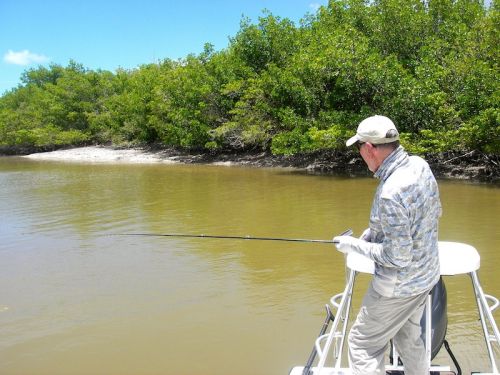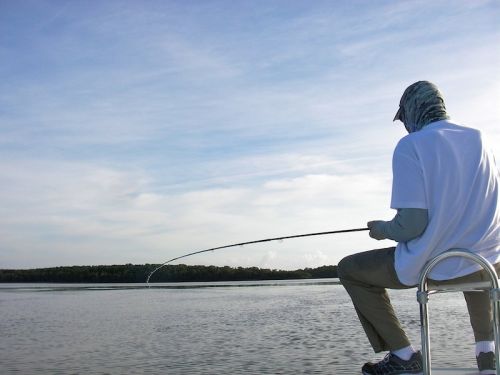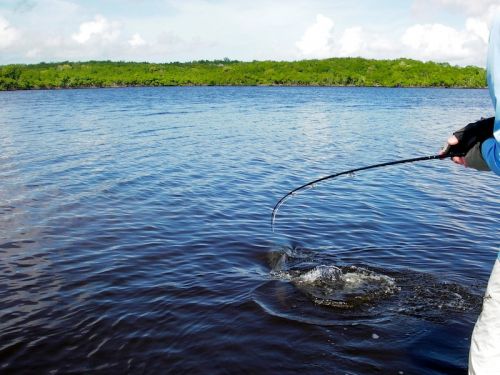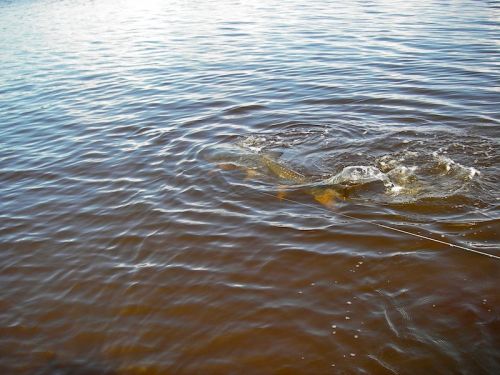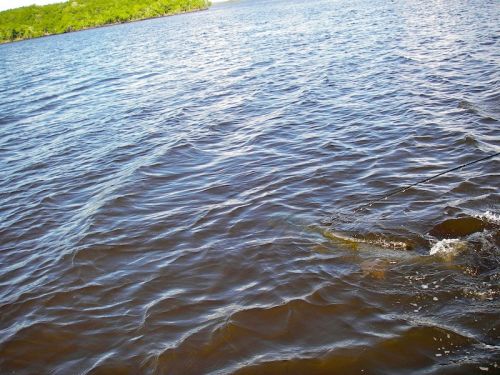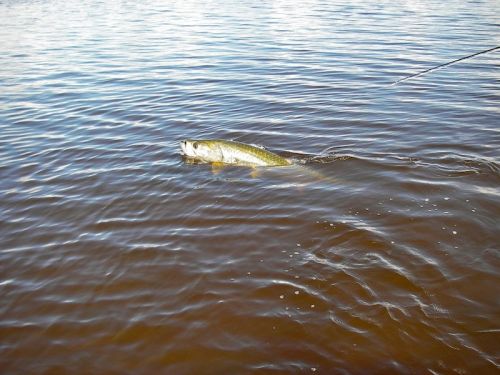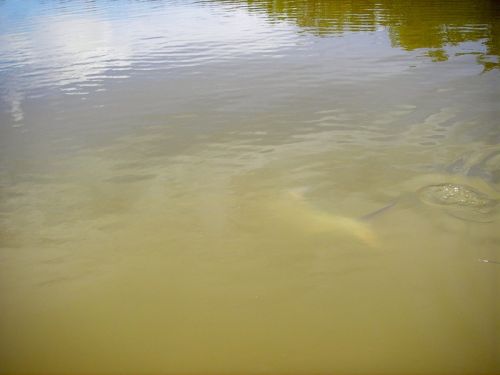Gary Meyer | Tuesday, 1 August 2017
A few days back I had ringside seats to a bare knuckles fight. In one corner was my tarpon addicted friend, who I might as well call TA. In the other corner, the challenger was a surprise addition to the ticket: an approximately 75# thug from the back alleys of Poonland. While we were there hoping for a fight, we were not expecting this level of competition – the neighborhood is better known as a place for lightweights. TA didn’t care, he takes on all comers. The fact that he was equipped with lighter gear didn’t bother him at all.
I’m not sure I would have wanted a piece of that action. Our weather has been unusually hot. In fact, the authorities have been advertising heat alerts and warning folks to stay inside, if possible. Some might think of South Florida as a place that should be hot but the truth is, due to our ocean breezes, we commonly have milder summers than most of the rest of the continental US. With the afternoon heat on high, and us being back in a small river protected from any breeze, I’m saying I might have had the better seat. Sometimes it is better to be the observer than the participant. Well… that’s my story and I’m sticking with it.
But, observe I did. I always do. I like to watch other anglers. I watch them cast, I watch them work their flies, and I watch how they fight fish. I might not always agree with how they do but I’m always looking to learn. I’ve watched TA fight a number of big fish and I think he does a good job of it. I sure can’t argue with his success rate.
While watching I drew some comparisons to how some others advanced anglers fight their fish. How Paul fights Snakeheads came first to mind. And then I remembered Mac explaining how he fights big trout on his long 3 weights when I tapped him for info before an uncommon-for-me trout trip I did earlier this summer. The three methods are about as different as techniques with a common goal can be.
Then again, maybe the goal is not always the same. Yes, we are all trying to “catch” the fish, but what that means is not necessarily the same thing.
I think one of the main differences is that when fighting a large tarpon we are not trying to bring the fish to us. The goal is simply to stop the fish from moving. Um… that sounds bad, I don’t mean that in the ultimate sense, of course. We release all tarpon… alive. The thing is, if you can stop, or even slow a tarpon you will definitely get its attention.
After the eat, at first, all you do is hang on. When the fish first feels that something is wrong it will immediately respond, and violently. In a panic, it will either take to the sky or take off for the horizon, or some combination of both. The angler has only to clear the line and hang on, but will usually take this particular moment to excitedly scream at the partner to get the motor running. Once the initial run is over, the first step is to regain line, get close to the fish, and apply as much pressure as possible, with that goal of impeding the fish from moving. That won’t be anytime soon, but by applying pressure directly in opposition to the bearing the fish is taking, progress can be made incrementally. Each time the fish feels that it is being held up it will respond with another burst of energy. The angler must be ready for the surge, actually, he must anticipate it. The pressure is applied primarily through the line. The line is controlled by the hands. The drag on the reel is actually not involved at this point, nor is the rod involved very much either. Only the rod butt is used, and contrary to what most believe, the rod is there as a cushion, not as a lever. If, or when the tarpon feels like it is being held, it will respond with a shudder. That is the clue for the angler to allow the line that is being held tight with the hands to slip. The fish will then bolt, or jump, and hopefully the rod and drag will protect the tippet. When the fish settles down again, the process is repeated until the fish can no longer bolt. That is a caught fish.
I’ve included a number of photos of TA fighting large tarpon over the years. I think you will see some common characteristics: hands clenched on the line at the butt, torsion of the torso to apply max pressure (whether sitting or standing), and the line directly down the back of the fish to impede forward progress.
I apologize for not being a better photographer but I get involved with the fight myself and try to maneuver the boat to best impede the fish’s progress. I would bet a large tarpon could tow a small skiff for days. Having the boat pointing in the same direction as the fish is swimming is not the correct technique. Also, I think my point-and-shoot camera has a delay that never quite seems to capture what I see when I push the button. The photo of the fish tail, the best I could do with this week’s fish, is all I got of a beautiful animal in full sunlight… but do you see the fly rod tip down in the corner… directly behind the fish?
Sexyloops has, over the years, innumerable pages, posts, words and thoughts on how to cast a fly rod. I think more pages should be on fish fighting tactics after the cast has been made.

